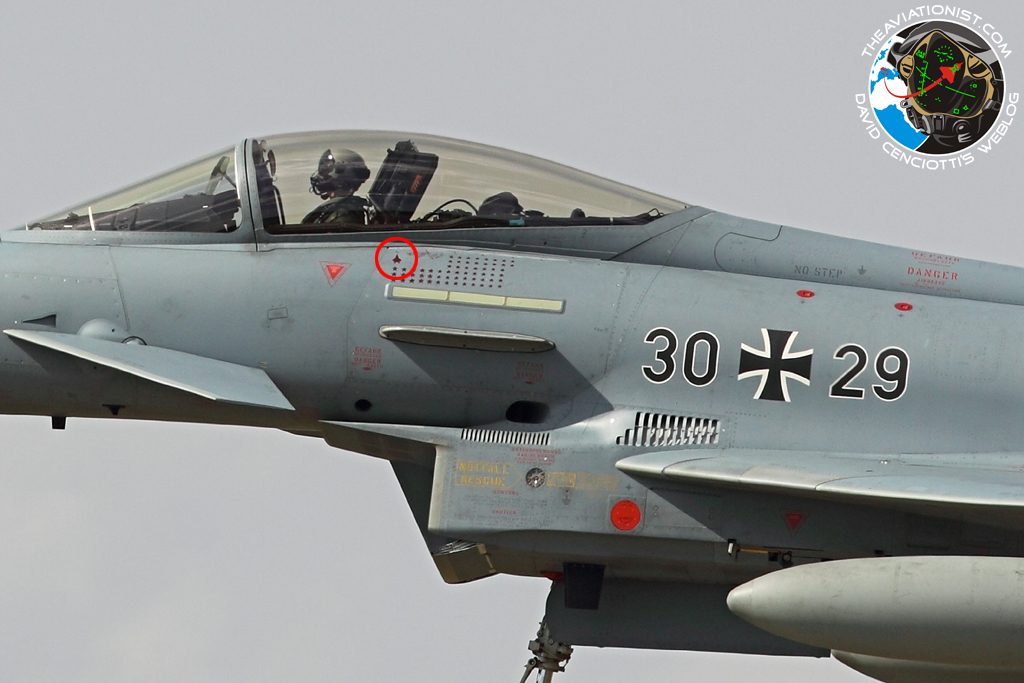RoninChaos
Member
Saw this in my google feed and thought I'd share. Shoot down if old. Found the video interesting. I knew the F-35 was overbudget and was a boondoggle, but I'm pretty surprised it's this bad. It feels like we're building weapons to fight the cold war. We were doing the same with the Abrahms M1 tank, where the military said they didn't need and Congress was like "YES YOU DO".
The craziest part is that Lockheed seems to be fucking up and nothing has really happened to them at all.
http://www.cbsnews.com/news/f-35-60-minutes-david-martin/
More at the link as well as a video.
The craziest part is that Lockheed seems to be fucking up and nothing has really happened to them at all.
http://www.cbsnews.com/news/f-35-60-minutes-david-martin/
The following script is from "The F-35" which aired on Feb. 16, 2014, and was rebroadcast on June 1, 2014. David Martin is the correspondent. Mary Walsh, producer.
The F-35 Joint Strike Fighter is the Pentagon's newest warplane and its most expensive weapons system ever, nearly $400 billion to buy 2,400 aircraft. To put that in perspective -- that's about twice as much as it cost to put a man on the moon. This, at a time when cuts in defense spending are forcing the Pentagon to shrink the size of the military.
60 Minutes Overtime
Can the U.S. military's new jet fighter be hacked?
As we reported in February, the Air Force, Navy and Marines are all counting on the F-35 to replace the war planes they're flying today. If it performs as advertised, the F-35 will enable U.S. pilots to control the skies in any future conflict against the likes of China or Russia. But the F-35 has not performed as advertised. It's seven years behind schedule and $163 billion over budget, or as the man in charge of the F-35 told us, "basically the program ran itself off the rails."
[Chris Bogdan: Good morning.]
Lt. Gen. Chris Bogdan is the man in charge of the F-35 and every morning starts with problems that have to be dealt with ASAP. This morning it's a valve that's been installed backwards and has to be replaced.
Chris Bogdan: How long does it take?
Answer: It's about a seven day operation.
Chris Bogdan: OK. And now you know what I'm going to say next.
Answer: Yes sir.
Chris Bogdan: What am I going to say next?
Answer: You're going to say, "We're not going to pay for it."
Chris Bogdan: That's right. We're not going to pay for it.
Chris Bogdan: Long gone is the time where we will continue to pay for mistake after mistake after mistake.
When Bogdan took over the F-35 program a year and half ago, it was behind schedule, over budget and relations with the plane's manufacturer, Lockheed Martin, bordered on dysfunctional.
David Martin: How would you characterize the relationship between the Pentagon and Lockheed Martin?
Chris Bogdan: I'm on record after being in the job for only a month standing up and saying it was the worst relationship I had seen in my acquisition career.
ws-lt-gen-chris-bodgen.jpg
Lt. Gen. Chris Bogdan
CBS News
These planes coming off the Lockheed Martin assembly line in Fort Worth cost $115 million a piece, a price tag Bogdan has to drastically reduce if the Pentagon can ever afford to buy the 2,400 planes it wants.
Chris Bogdan: I know where every single airplane in the production line is on any given day. You know why that's important? Because Lockheed Martin doesn't get paid their profit unless each and every airplane meets each station on time with the right quality.
David Martin: So if this plane doesn't get from that station to this station--
Chris Bogdan: On time with the right quality they're going to lose some of their fee. You've got to perform to make your profit.
David Martin: They must love you at Lockheed Martin.
Chris Bogdan: I try and be fair, David and if they want what I call "winner's profit," they have to act like and perform like winners, and that's fair.
Although the F-35 won't begin to enter service until next year at the earliest, pilots are already conducting test flights and training missions at bases in California, Florida, Maryland, Arizona and Nevada. It's supposed to replace virtually all of the jet fighters in the United States military. There's one model for the Air Force, another for the Navy -- designed to catapult off an aircraft carrier -- and a third for the Marines which seems to defy gravity by coming to a dead stop in midair and landing on a dime.
David Berke: This is a fighter that has amazing capabilities in a lot of ways.
60 Minutes: Segment Extras
The F-35's vertical landing
Lt. Col. David Berke says there's no comparison between the F-35 and today's jet fighters.
David Berke: I'm telling you, having flown those other airplanes it's not even close at how good this airplane is and what this airplane will do for us.
David Martin: We have planes that are as fast as this.
David Berke: You bet.
David Martin: And can maneuver just as sharply as this one.
David Berke: Sure.
David Martin: So why isn't that good enough?
David Berke: Those are metrics of a bygone era. Those are ways to validate or value an airplane that just don't apply anymore.
f35-climbing.jpg
You can see from its angled lines, the F-35 is a stealth aircraft designed to evade enemy radars. What you can't see is the 24 million lines of software code which turn it into a flying computer. That's what makes this plane such a big deal.
David Berke: The biggest big deal is the information this airplane gathers and processes and gives to me as the pilot. It's very difficult to overstate how significant of an advancement this airplane is over anything that's flying right now.
Without the F-35, says Air Force Chief General Mark Welsh, the U.S. could lose its ability to control the air in future conflicts.
Mark Welsh: Air superiority is not a given, David. It never has been. And if we can't provide it everything we do on the ground and at sea will have to change.
"It's very difficult to overstate how significant of an advancement this airplane is over anything that's flying right now."
Today's enemies, al Qaeda and the Taliban, pose no threat to American jets. But Welsh is worried about more powerful rivals.
Mark Welsh: We're not the only ones who understand that going to this next generation of capability in a fighter aircraft is critical to survive in the future of battle space and so others are going, notably now the Chinese, the Russians, and we'll see more of that in the future.
And this is what the competition looks like -- the Russian T-50 and China's J-20 Stealth Fighter. According to Welsh, they are more than a match for today's fighters.
Mark Welsh: If you take any older fighter like our existing aircraft and you put it nose to nose in, in a contested environment with a newer fighter, it will die.
David Martin: And it will die because?
Mark Welsh: It will die before it even knows it's even in a fight.
In aerial combat, the plane that shoots first wins, so it all comes down to detecting the enemy before he detects you. The F-35's combination of information technology and stealth would give American pilots what Marine Lt. Gen. Robert Schmidle describes as an astounding advantage in combat.
Robert Schmidle: I shouldn't get into the exact ranges because those ranges are classified, but what I can tell you is that the range at which you can detect the enemy as opposed to when he can detect you can be as much as 10 times further when you'll see him before he'll ever see you and down to five times...
David Martin: I want to nail that down here. If the F-35 was going up against another stealth aircraft of the kind that other countries are working on today, it would be able still to detect that aircraft at five to 10 times the range?
Robert Schmidle: You would be safe in assuming that you could detect that airplane at considerably longer distances than that airplane could detect you.
The F-35's radars, cameras and antennas would scan for 360 degrees around the plane searching for threats and projecting, for example, the altitude and speed of an enemy aircraft, onto the visor of a helmet custom-fitted to each pilot's head.
It is so top-secret no one without a security clearance has ever been allowed to see what it can do...
[Alan Norman: If you want to head up to my office, come on up.]
...until Lockheed Martin's chief F-35 test pilot Alan Norman took us into the cockpit for a first-hand look.
Alan Norman: So, if you put that over your face . . .
That blindfold is to make sure I can see only what cameras located in different parts of the plane project onto the visor.
Alan Norman: You're looking through the eyeballs of airplane right now. And you can even look down below the airplane. So you're looking actually through the structure of the airplane right now.
We've positioned 60 Minutes cameraman Tom Rapier underneath the plane so we can test the system.
David Martin: So now I look and there's Tom Rapier and he's giving me one finger up.
Alan Norman: You're the only person in the world that can see him with that imagery right now.
We're not allowed to show you what's on the visor because much of it is still classified. But wherever I turn my head, I can see what's out there.
Chris Bogdan: So there's a lot riding on that helmet, David, there's no doubt.
David Martin: How much does it cost?
Chris Bogdan: The helmet itself plus the computer system that is used to make the helmet work is more than a half million dollars.
But there have been problems with the helmet and when we visited the Marine Corps station in Yuma, Ariz., a malfunction caused a scheduled flight to be scrubbed.
In fact, on any given day more than half the F-35s on the flight line are liable to be down for maintenance or repairs.
Bugs and glitches in the plane first reveal themselves in testing at Edwards Air Force Base in California where every test flight is monitored and recorded as if it were a space flight.
The plane has to go through 56,000 separate tests -- everything from making sure a bomb will fall out of the bomb bay to seeing what happens when it is dropped at supersonic speeds.
[Rod Cregier: Of course you never like to lose an aircraft.]
Col. Rod Cregier runs the test program.
Rod Cregier: You're taking an aircraft that's unknown and you're trying to determine does it do what we paid the contractor to make it do. Does it go to the altitudes, the air speeds? Can it drop the right weapons? We're trying to get all that stuff done before we release it for the war fighter, so that they can actually use it in combat.
David Martin: So are you basically the guy who has to deliver the bad news about the plane?
Rod Cregier: Sometimes it's hard to tell folks that their baby is ugly, but you have to do it because if you don't get it done, who else is gonna do it?
More at the link as well as a video.


